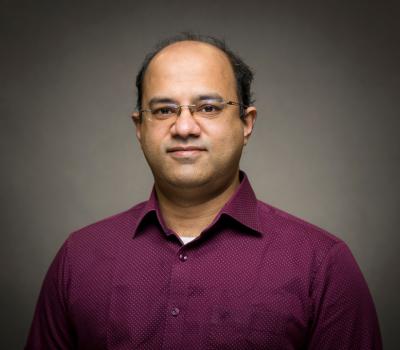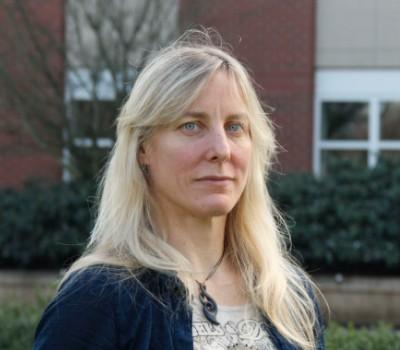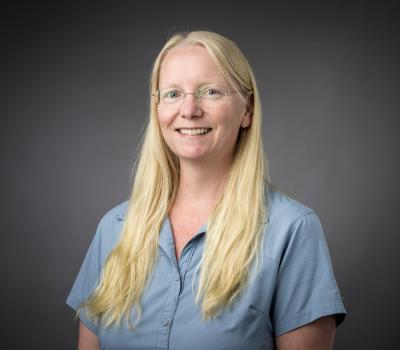Can we improve robot hands by watching people try to use them as their own? How can we design a water treatment system for the developing world that takes the end user into account? Can we reduce collisions between eagles and wind turbines?
These were the questions being tackled by the students from the School of Mechanical, Industrial, and Manufacturing Engineering who won awards at the College of Engineering’s 2018 Graduate Research Showcase.
The showcase is a display of engineering research designed to promote the work of the college’s graduate students, and how they are advancing the frontiers of engineering knowledge.
In addition to the recognition of their mentors and peers, winning presenters were invited to attend the 2018 Oregon Stater Awards ceremony on Feb. 22 in Portland, where they had the opportunity to present their research to the College of Engineering’s industry partners and distinguished alumni.
Is less truly more? Improving under-actuated robot hands by observing how humans use them

John Morrow uses an under-actuated robot hand to write with a marker.
John Morrow, a Ph.D candidate in robotics at Oregon State University, is looking at ways to improve robotic hands by putting them under the control of human ones.
His research focuses specifically on under-actuated hands, which work by controlling an entire finger with a single tendon, like in human hands. When a finger is curling, if one link of the finger becomes immobilized the others continue to curl until they become immobilized as well. “This is great for grasping because it’s so simple but not so for manipulation,” said Morrow.
“Naturally we would want to make the hands more complex to make them more versatile. Unfortunately, making them more complex also makes them harder to control.”
Other researchers have explored improving under-actuated hands by implementing joint-locking or custom gripper designs. Morrow is taking a different approach.
His hypothesis is that humans can be used to determine a working tradeoff between versatility and complexity. To test this, he is using human subjects to puppet robot hands with varying levels of complexity to complete various tasks that are hard for robots. These tasks range from simple things like using a spray bottle to more complex ones like drawing with a pen. Morrow will then examine the differences in how people use these robotic hands to determine the best way to add complexity to the system and how to use it once the complexity has been added.
Morrow’s advisors on the project are Cindy Grimm, associate professor of robotics, and Ravi Balasubramanian, assistant professor of robotics.
A clean water solution for the developing world

Grace Burleson inspects a water purifier at field test in Uganda.
Today, more than one in 10 people worldwide do not have access to clean drinking water according to the World Health Organization. All told, lack of clean water is responsible for the death of an estimated 1.5 million children every year. Despite technological advancements in recent decades, a large percentage of disseminated water treatment technologies break or go unused.
Grace Burleson, who is pursuing dual master’s degrees in mechanical engineering and applied anthropology, is working to solve this problem. Burleson is part of a team of researchers led by Nordica MacCarty, assistant professor of mechanical engineering, that is collaborating with a nonprofit organization called InStove to assess a new clean water technology to better predict acceptance rates and efficacy in its usage context.
The team has tested a novel water purification product and is investigating ways to support its deployment and promote sustained use. This product, branded the “InStove Water Purifier,” has the potential to produce 4,500 liters of safe drinking water per day – enough for 1,000 people – at minimal cost to users and the environment.
For her part, Burleson is using a mixed-methods approach to evaluate and test the feasibility and effectiveness of the product before it can be commercialized.
“The issue isn’t just a technical one,” she said, “It’s about understanding of human needs and human behavior.”
As part of the study, she traveled to Uganda for a field trial at a high school dormitory. The specific aims were to assess the technical performance while evaluating user preferences and product appeal or criticism. The results show that the InStove Water Purifier performs as well in the field as in the lab. Furthermore, although the users found the product to be easy to use and loved the time and fuel savings, they offered Burleson many ideas for product improvement. The insights from local users will help designers at InStove produce a more preferred and sustainable product; a step that is unfortunately often neglected in development work.
“The InStove Water Purifier must be evaluated both technically and socially to ensure that the product is both effective in this context and usable,” Burleson said. “We’re working with engineering, anthropology, and business faculty to look at this project more holistically than traditional engineering projects.”
Helping eagles coexist with wind energy

William Maurer examines a 360-degree camera that will be used in a system to detect eagles near wind turbines.
The coexistence of sustainable wind energy and wildlife requires an understanding of how birds and bats interact with wind farms. Of particular concern are eagles, due to their protected status.
William Maurer, a graduate student in mechanical engineering, is part of an interdisciplinary team of researchers working to improve this understanding, and reduce the frequency of collisions that take place.
The team, led by Roberto Albertani, the Boeing Professor of Mechanical Engineering at Oregon State, is developing a three-part system for protecting the eagles.
“The system that will automatically search for eagles around wind farms, and it will also be able to detect when collisions do occur,” Maurer says. “A third component will be able to deter them from the turbines in the first place.”
Ultimately, the system will feature a tower-mounted, computer-connected camera able to determine if an approaching bird is an eagle and whether it’s flying toward the blades. If both those answers are yes, the computer triggers a ground-level deterrent: randomly moving, brightly colored facsimiles of people—designed to play into eagles’ apparent aversion to humans.
Maurer has worked to develop the casing and weather-proofing for all of the components of the systems as well as solutions to mount the hardware on the turbines. He’s also been involved in recording videos of trained eagles that will be used by other team members to create computer algorithms for the system.
“This projects helps me feel like I’m actually making a difference and helping these species that are in need of protection.






